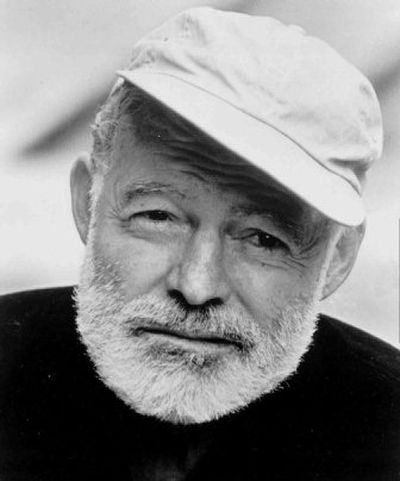Hemingway documentary dotes on detail

The editor of the University of Idaho Press’ Hemingway Review helped the makers of a new documentary on the author answer some unlikely questions.
What kind of pencils did he use as he composed his manuscripts in Paris?
How did he sharpen them?
What did his notebooks look like?
“The questions may seem trivial,” said Susan Beegel, a longtime Hemingway scholar, “but I think they show the program’s respect for accuracy in every level of detail.”
Beegel served as a consultant on “Ernest Hemingway: Rivers to the Sea,” which is scheduled to air Wednesday on PBS. She will also participate in an online chat about the show the next day sponsored by the Washington Post.
“In previous documentaries, I think the focus has been almost exclusively on the man, not the work,” said Beegel, who edits the Hemingway Review from her home in Maine, and also teaches occasionally at the UI. “I think this really looks at Hemingway as a force in American modernism.”
And yet the scenes used to illustrate the film needed to be accurate – thus the questions about Papa’s pencils.
“That one nearly did me in,” Beegel said in a phone interview this week. “But I eventually found a pencil museum.”
Beegel advised the filmmakers that Hemingway most likely used a wooden Le Comte pencil and little blue “Incroyable” notebooks favored by French schoolchildren. Such details, though, are not the main focus of the 90-minute film, which is the first such work to include direct quotations from the Hemingway estate’s archives of manuscripts, correspondence and other documents, Beegel said.
“That’s what makes it really special,” she said.
Beegel said the documentary, directed by DeWitt Sage, will include readings from the author’s work and correspondence from such literary luminaries as Gertrude Stein, Ezra Pound and F. Scott Fitzgerald.
Sage, in an interview on the PBS Web site, said he was drawn to the Hemingway project after rereading his work – especially the short stories.
“And I realized right away that I had misread Hemingway in the first place and misinterpreted the core of his art, because he wasn’t writing action-adventure stories, which is what had led me to him at age 20,” Sage said. “He was writing about surviving with some dignity the indignities of life.”
Hemingway is among the most read – and most written-about – authors in the world. He viewed the development of his spare prose style as an important blow against the baroque, overblown manner and sentiment of the literature of his day, Beegel said, but it has the added advantage of being relatively easy to translate – especially compared to other modernists such as William Faulkner or James Joyce.
Beegel’s doctoral dissertation at Yale focused on Hemingway, and she has written two books and numerous magazine articles on the author over her career.
“He’s always been on my radar screen,” she said. “He won the Nobel Prize in literature the year I was born.”
The UI joined the Hemingway Society in publishing the quarterly review 12 years ago. Hemingway’s ties to Idaho included frequent trips to Sun Valley and southern Idaho to write, hunt pheasant and fish for trout. It also is where he shot himself in 1961.
Beegel said that as she’s had a chance to review Hemingway’s manuscripts, she saw him develop as a writer. In early works, he would cut out large passages and entire characters – striving to pare the stories and novels to their essence.
Later in his career, however, he needed less self-editing. “The Old Man and the Sea,” the novel cited when he won the Nobel in 1954, was written in a “six-week blaze of glory,” she said. “He wrote that almost word for word the way it appears on the page.”